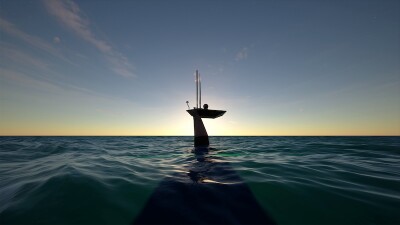Bigger is better when it comes to the future new offshore service vessels in the Gulf of Mexico.
New OSVs will need to be 5,000 to 6,000 deadweight tons and no more than five years old, according to Christian Vaccari, senior vice president, Gulf Island Shipyards, Houma, La.
“The point I want to make here is that the majority of vessels working in today’s market are vessels that are big, really big,” he said during his keynote address at the WorkBoat Maintenance & Repair Conference & Expo in New Orleans yesterday. These vessels must be “loaded with capacity — cranes, accommodation units and more, and these ships have very deepwater drafts.”
Vaccari describes 240', DP-2, 2,400-dwt OSVs that have been built over the last several years as “high spec” boats while the 300', DP-2 or better, 5,000 to 6,000 dwt OSVs are “ultra high spec” vessels that are “double” the capacity of the 240s. “Will we see the 240' OSV working in the Gulf again? As oil companies squeeze operators, will the efficiencies of the larger vessels make the 240 class obsolete?” he asked.
Vaccari’s shipyard pedigree goes back to the 1960s, when his family bought a boatbuilding yard that became Leevac Shipyards, a Jennings, La.-based mainstay in the workboat industry. Leevac built for the titans of the OSV industry such as Tidewater Marine and later Hornbeck Offshore Services, which he helped found, and Aries Marine.
“My family bought that shipyard in 1965, with the expectation that we would build tank barges,” he said. “But in the ‘70s, we started building utility boats and by the early ‘80s we were building what had become known as the classic 180' Gulf of Mexico OSV.”
The oil and gas industry hit a wall in the 1980s, a time that many industry experts say compares with the current severe down cycle in the Gulf of Mexico. “After a protracted downturn in the ‘80s that nearly wiped all of us out, we experienced the emergence of deepwater drilling and with it the demand for larger vessels capable of three times the capacity of the original 180' design,” Vaccari said.
With the 1990s came the expansion of dynamic positioning on vessels, and technology and safety concerns have taken the industry to new heights of responsibility. “As the owner of a shipyard you must ask yourself how do we keep up with these changes?” said Vaccari. “Simple. You evolve. You join forces with another industry leader, and you create Gulf Island Shipyards.
“We can expect these vessels to require higher levels of competent technical support once they begin their drydocking cycles,” he said. “By their sheer size, their access to many shipyards is limited.”
Gulf Island Fabrication, Houston, purchased the assets of Leevac Shipyards for $20 million in January. That led to the creation of Gulf Island Shipyards, which can handle the construction of pushboats, MPSVs, deck barges, liftboats, inland tank barges, ATBs, OSVs and other workboats.
Vaccari said this down cycle is having a profound effect on the industry, an effect that will change the way oil companies do business with boat owners and the way boat owners do business with shipyards.
Vaccari said that there are approximately 421 U.S.-flagged OSVs in the Gulf of Mexico, with only 216, or 51%, of the available fleet meeting his definition of a high-spec vessel. Of those 216, 70 are stacked, leaving about 80 ultra-high-spec OSVs in play. Vaccari’s research concerning Gulf drydocks suggests that only 22 can handle ultra-high-spec OSVs.
“That is where I see the market heading,” he said, “away from areas that cannot support deepwater access. It may be one thing to build a MPSV and float it out light ship, but the day is coming where those vessels will only get serviced in a port with true deepwater access.”
The WorkBoat Maintenance & Repair Conference & Expo runs through tomorrow. There's still time to register.





